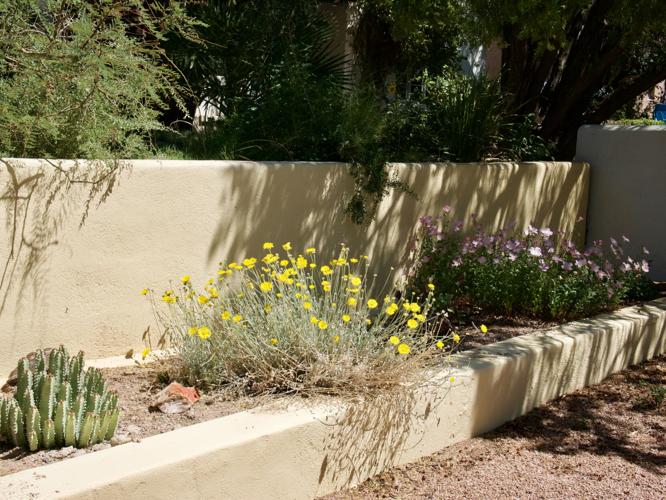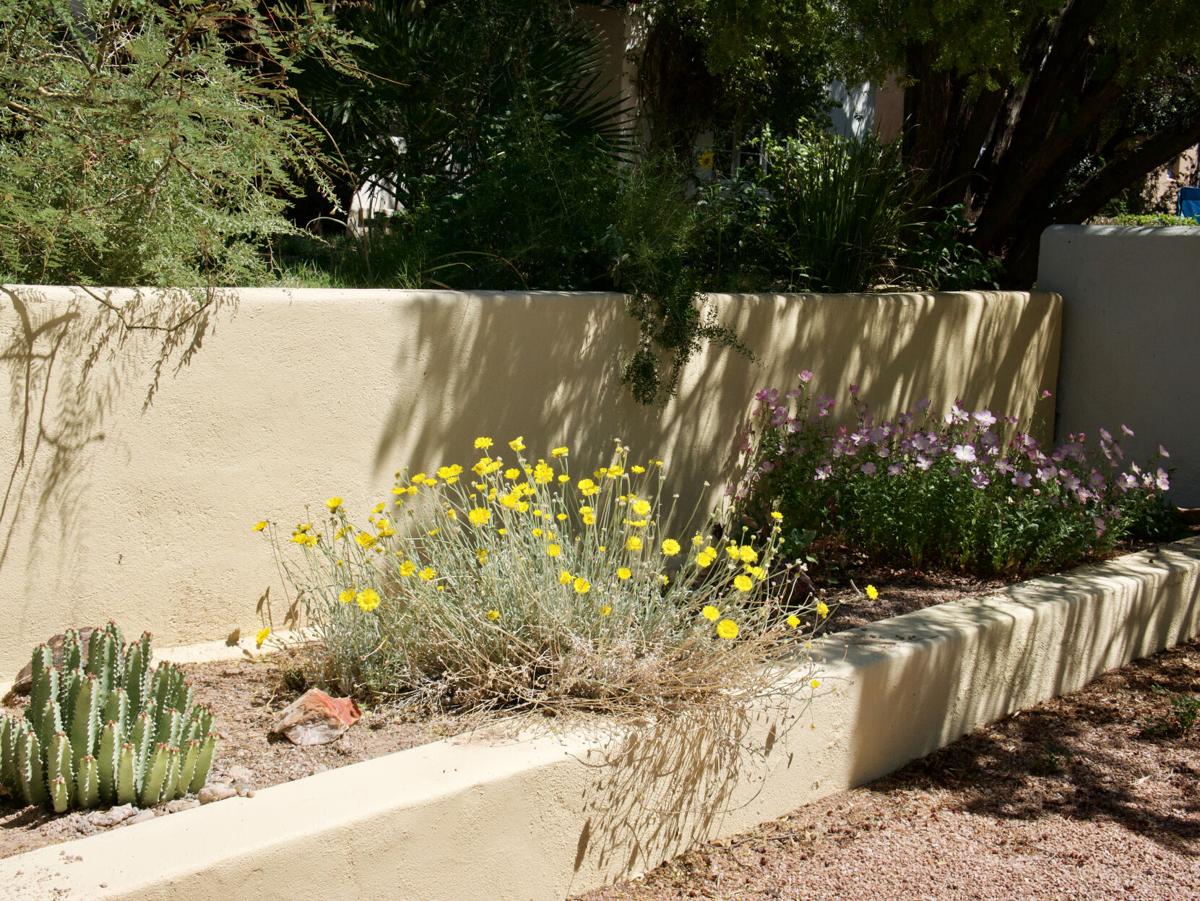The first thing most new gardeners learn is their climate zone. For example, Tucson is in the U.S. Department of Agriculture’s Climate Zone 9b and Sunset Magazine’s Zone 12. These zones give you general information about frost dates, low temperatures and rainfall in our area.
Every individual garden, however, is also subject to microclimates. Microclimates range on the scale of local and neighborhood trends down to small areas of your yard. An example of a larger-scale microclimate is Tucson’s urban heat island, which is the effect that pavement, buildings and lack of vegetation have on temperatures (and possibly rainfall). This means that areas of the city with fewer trees and more built structures have temperatures that are on average higher than surrounding rural areas. An article in the Arizona Daily Star discusses these changes and has a map of neighborhoods where you can expect to have higher temperatures.
What affects your microclimate?
On a smaller scale in your own garden plot, there are a number of factors that can affect your microclimate and lead to success or failure of certain plants. Here are some of these factors to consider when you are choosing and placing plants.
High and low areas: Even very small differences in elevation (a couple of inches) can make a difference to how well your plants do. High areas drain more, and are best for plants that require fast drainage. Low areas tend to collect water. Perhaps more significant, however, is the temperature difference between higher and lower parts of your yard. Cool air sinks and flows naturally into low spots, especially washes, so these are not ideal for plants that are sensitive to frost.
A great way to monitor your yard’s temperatures is to purchase maximum/minimum thermometers. You can place these in different areas of your yard for a year and record the highest and lowest temperatures. Most also record daily temperatures and humidity levels so you can start to learn more about the microclimates in your yard.
Sunny and shady areas: This may seem obvious, but many gardeners do not pay attention to the sun and shade in their yard over different seasons. If you go out in your yard in December and see a shady spot, consider whether it will still be shady in the summer. Ideally you would observe your yard for a full season and note the sun, shade, wind and temperature patterns, but few of us have the patience to do this. You can make a good guess by considering your yard’s orientation. The south- and west-facing sides will be sunny in the summer, unless there are tall trees or other structures around to provide shade. Don’t plant any plants that require part-shade in these areas. For plants that like some sun, put them on the east side where they will get morning sun and afternoon shade. The north side is usually the most shaded, but for properties that are precisely north-south oriented it may still get blistering afternoon sun at the height of summer.
Nearby structures: Stones, rocks, neighboring houses, driveways, walls and even plant containers can absorb and reflect heat and can also provide shade. You can use this to your advantage by planting more frost-sensitive plants like citrus or bougainvillea in areas where they will get benefit from extra heat. There are also plants, such as mesquite, brittlebush, palo verde, creosote bush and many cacti, which can grow well in reflected heat; keep these in your arsenal and use them in areas where other plants won’t grow.

These planters are located against a south-facing wall. The wall warms up during the day and in the winter the plants benefit from the extra heat.
Wind: It’s important to note where the wind comes from into your yard. This can help in planning out your yard’s functions — for instance, not putting a seating area in the dustiest corner of your yard (I’ve done this!). It will also help you save your plants. Many plants do not like windy conditions, and the dry quality of our wind tends to rob even the most drought-tolerant plants of the little moisture they have. Your yard’s specific orientation, as well as nearby structures, will affect the flow of wind, so you will need to observe it over time.
Precipitation: This is, arguably, the main factor you as a gardener can control — via irrigation. If you’re trying to save water (and money), you can look at rainwater harvesting, grey water harvesting, and planting drought-tolerant native plants. Providing shade, increasing organic matter in your soil, and mulching will also help you conserve water — more on that below.
Creating microclimates for your plants
Armed with this knowledge, you can start creating some favorable microclimates for your plants. One of the easiest things you can do is to plant a shade tree. If you want sun beneath it for the winter, get a deciduous tree (like a desert willow); otherwise, for year-round shade get an evergreen one. The tree will cool the soil beneath its shade, capture water and store it in the soil, and create mulch with its dropping leaves. All of these functions will increase the humidity and lower the temperature in your yard.
If you want an area that’s warmer than the ambient temperature, a masonry or rock structure usually does the trick. The south and west sides of a wall (or rock) will be the warmest, so this is a good place to put those marginally tropical trees and plants. Keep in mind that in the summer the extra heat will mean more watering to keep those plants alive.
For controlling soil moisture, there are several tools in your toolbox. First, creating basins (low areas) and berms (high areas) will help channel the flow of water. You can plant cacti and natives that don’t like wet feet (like creosote) on the high areas, and plants like desert willow that prefer wetter conditions in the basins. Adding organic matter to your soil (in the form of compost and composted manures) will increase the amount of moisture it can hold. Mulching with organic matter will also shade your soil and help it hold in moisture, which will reduce your soil temperatures, water bill and has the added benefit of helping your plants thrive. You can also plant groundcovers in place of mulch for the same effect.
Other resources
This free online mapping tool lets you figure out temperatures, water flow and tree cover in your neighborhood. For more details on how to use it, check out this blog post from Brad Lancaster in the Dunbar Spring neighborhood.
For more information on Tucson’s climate, check out the University of Arizona’s Climate Assessment for the Southwest, or CLIMAS. It has an updated climate outlook, a fun monthly podcast, monsoon predictions and other helpful information.
Sustainable gardens have a very positive impact on the environment and local wildlife.






